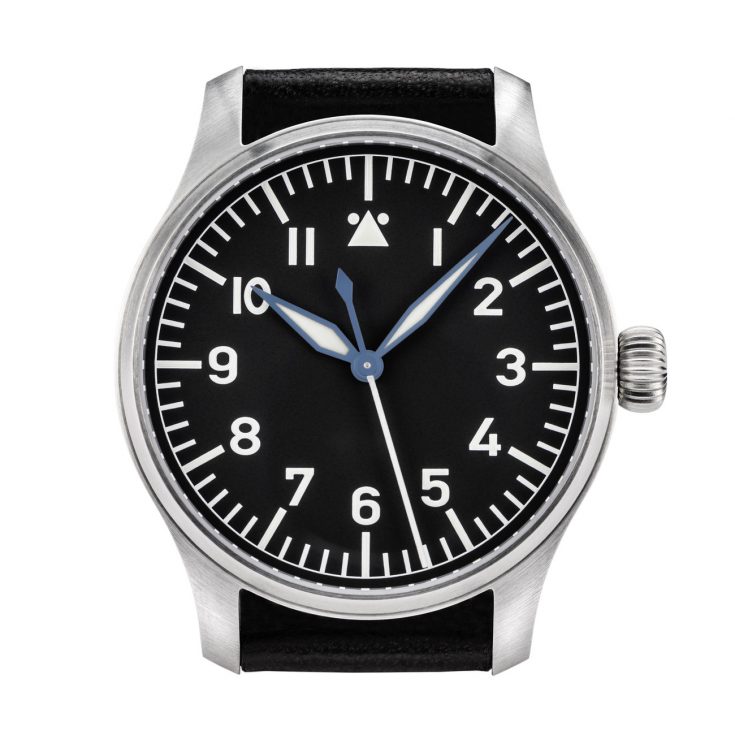What are Flieger Watches?
A flieger is a pilot or aviator watch, and majority of the modern flieger watches are inspired by the WW II pilots watch. Like maritime navigation, aviation required the most precise watches and clocks to determine geographical longitude. Precise, robust and easily read watches were ordered for air travel to determine aircraft location and flight duration.
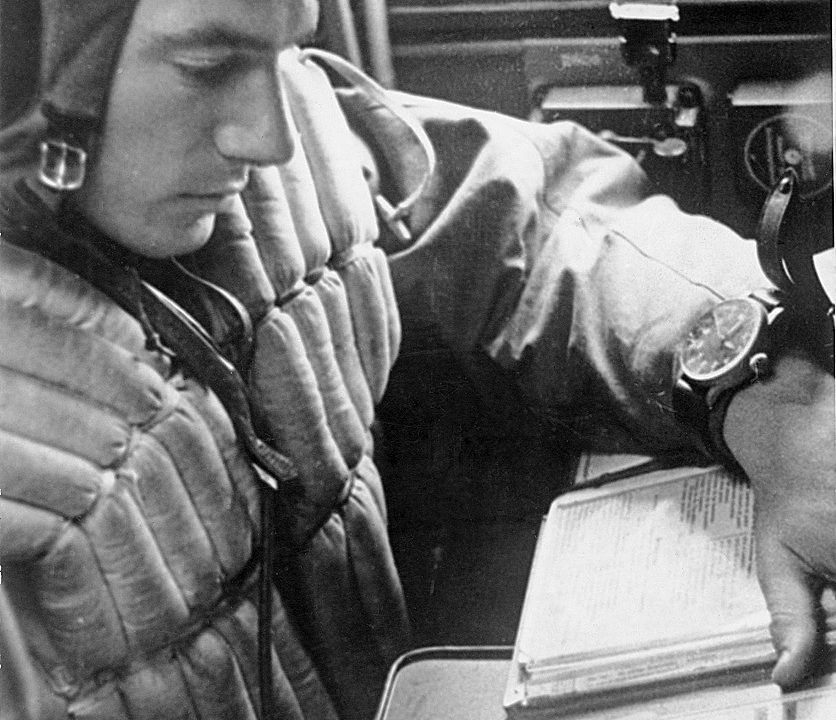
WW II pilot watches, also known as “Beobachtungsuhren” or “B-Uhren” (observation watches). The B-Uhren watches were used as a navigation instrument during the flight. The navigators on board could determine the precise position of the aircraft in combination with an octant (angle). Interestingly, pilots usually wore chronographs as a backup, should the cockpit clock fail. B-Uhren appeared in two different types of dials:
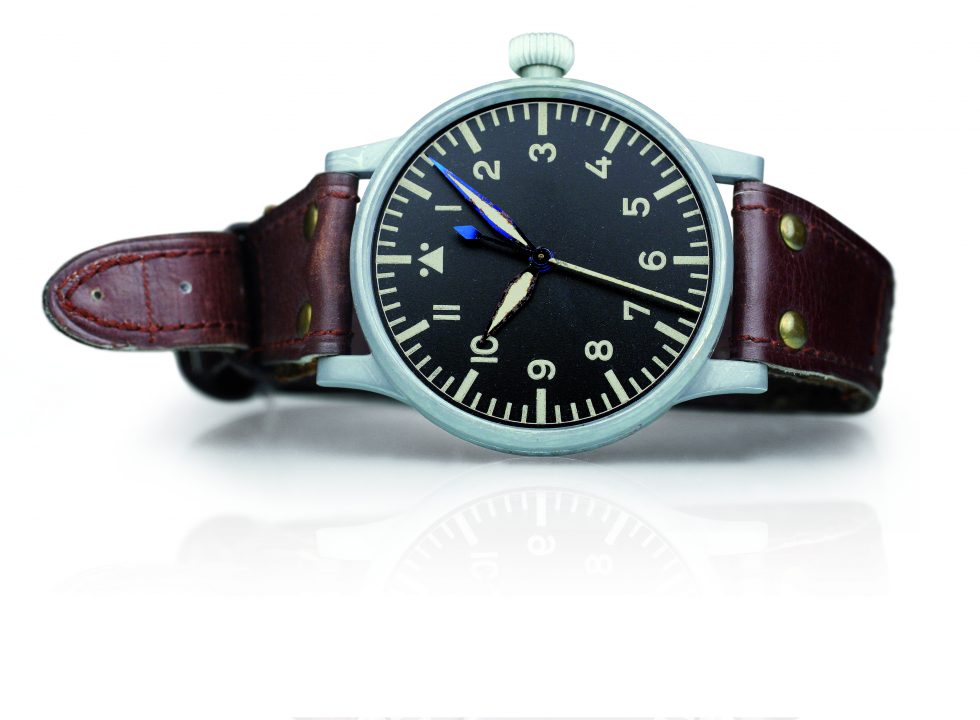
Type A (Baumuster A) from 1940 to January 1941
The Type A was classic dial with numerals 1 to 11, and instead of a 12, a triangle with two dots.
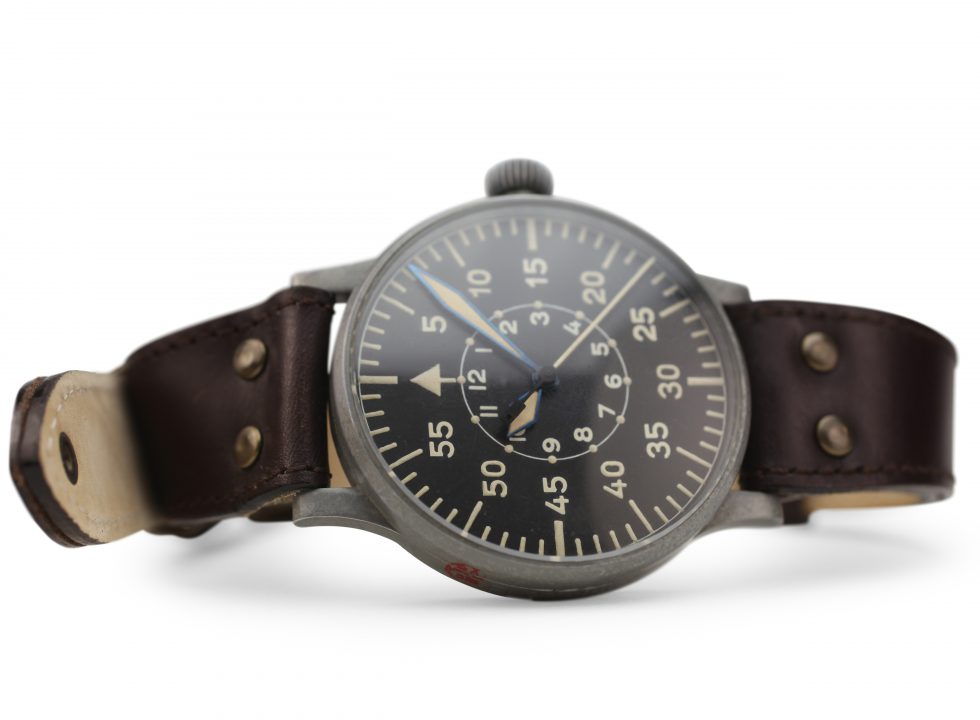
Type B (Baumuster B) starting in January 1941
Type B dial had big minute numerals from 5 to 55 on the chapter ring, and a small sub-chapter ring with hour numerals.
Characteristics of A Flieger
The Reichluftfahrtsministerium (RLM), the “Imperial Air Ministry”, defined strict specifications for the B-Uhren watches (applicable to both Type A and Type B).
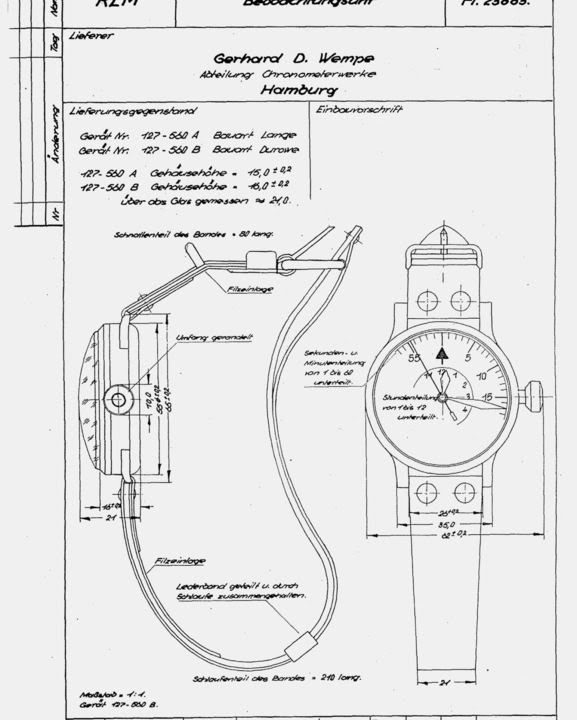
Case size
The watch movements were uniformly cased in 55mm diameter, gray varnished, brass or steel housings with snap on case back. Printed on the inside of the case back was the type, device and movement number, stock no. and the producer’s name.
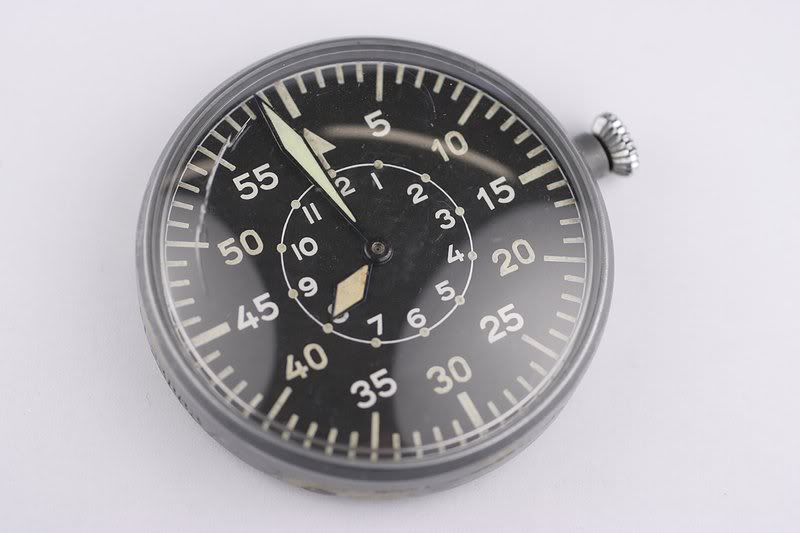
Crown
A large onion-shaped crown, so that the navigators could also operate the watches without taking off their gloves.
FL 23883 Marking
The “FL” stands for Flight and the first two digits, “23” stands for navigation, and “883” was a code assigned by the German Testing Office for Aeronautics.
Triangle at 12’o clock
It was important for the twelve o’clock indicator to be marked with a triangle with two dots, so that it can be differentiated from other numbers with a quick glance. The other reason was for pilots to quickly determine the upward orientation.
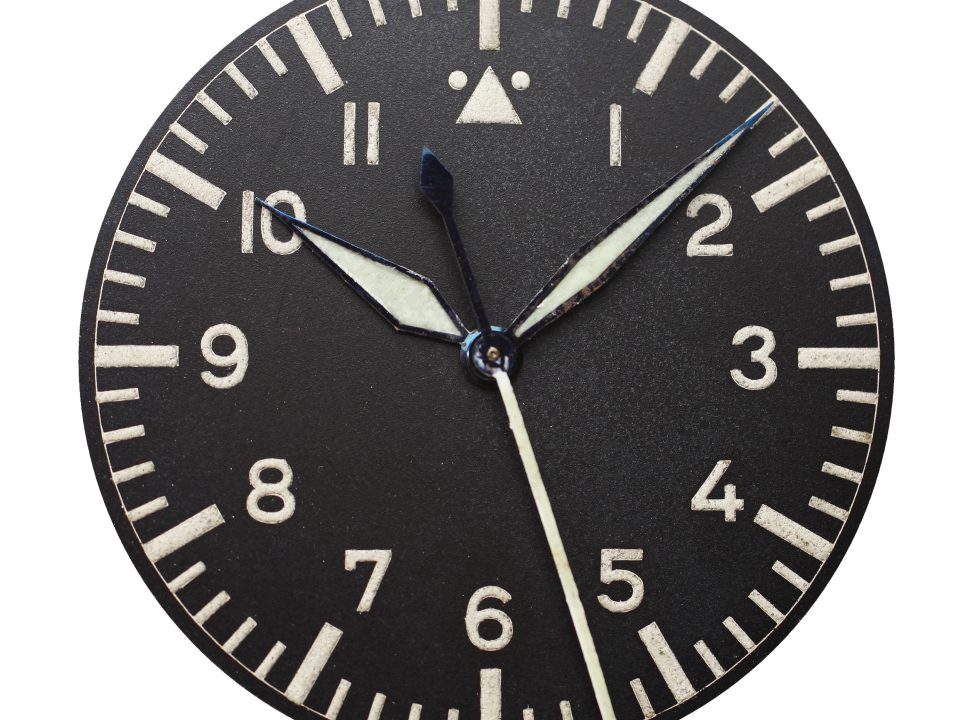
Luminescence
A strong radium (226Ra) paint was used for its for luminescence properties in reading the dial in darkness. The luminous material was applied on large Arabic numerals and minute and second indicators. The hour, minute and second hands were also coated with the radioactive paint.
Hacking movement
B-Uhren watches had a central second hand with the drive outside the power flow and a balance stop function for accurate time setting. Special spring-loaded movement “hack” feature (temporarily stopping the movement’s gear train/ mainspring) to facilitate crew/flight synchronization between aircraft participating in any given mission.
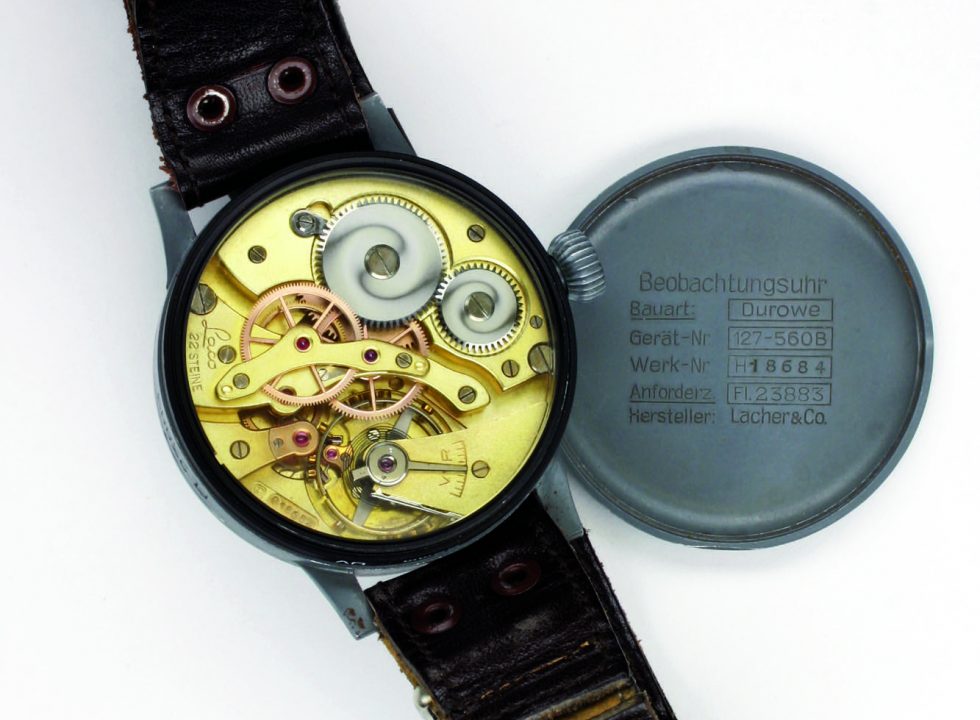
Regulated and Tested as a Chronometer
Luftwaffe High Command gave exact instructions regarding operating precision and the degree of movement completion required.
Before being delivered, every single watch had to be tested and given operating certification by the German Naval Observatory. The fine adjustment of each watch had to be conducted in 6 positions and at 3 varying temperatures. The watches were regulated as navigation watches and individually tested for chronometer-quality in Gersundbrunnen, near Glashütte.
Breguet balance spring
Breguet balance spring was used by major watch manufacturers at the time (also true for modern watches). It can withstand lateral shocks as well as magnetism.
Strap
Use of an extra-long, riveted, straps expressly made to wear over shearling flight jacket sleeves. Although some of the original brands have added the tale that navigators would sometime wear the watch over their ankle.
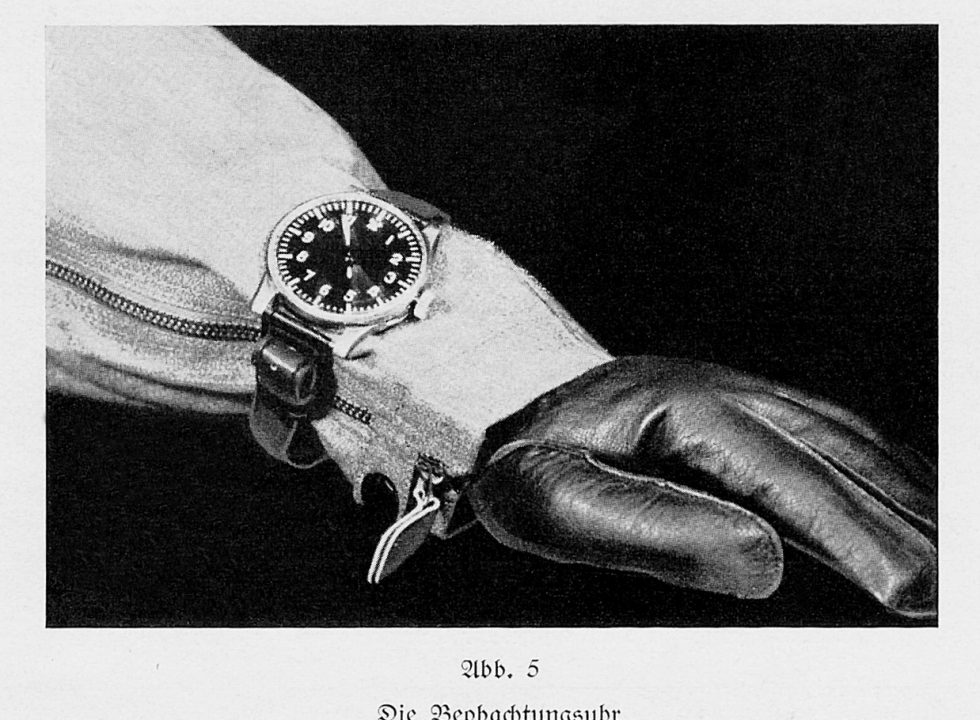
The Original Five
Only five companies manufactured the original B-Uhren watches for the Luftwaffe:
A. Lange & Söhne – Lange produced a total of 6904 watches with cal. 48/1 between 1940 and 1945. Due to limited capacity, watches were assembled by Huber in Munich, Felsing in Berlin, Schieron in Stuttgart, Schätzle & Tschudin in Pforzheim, and Wempe in Hamburg. To avoid deliberate hostile destruction, the manufacturer’s names were no longer engraved from 1944, so Lange and Söhne name was replaced by a code “nhk”.
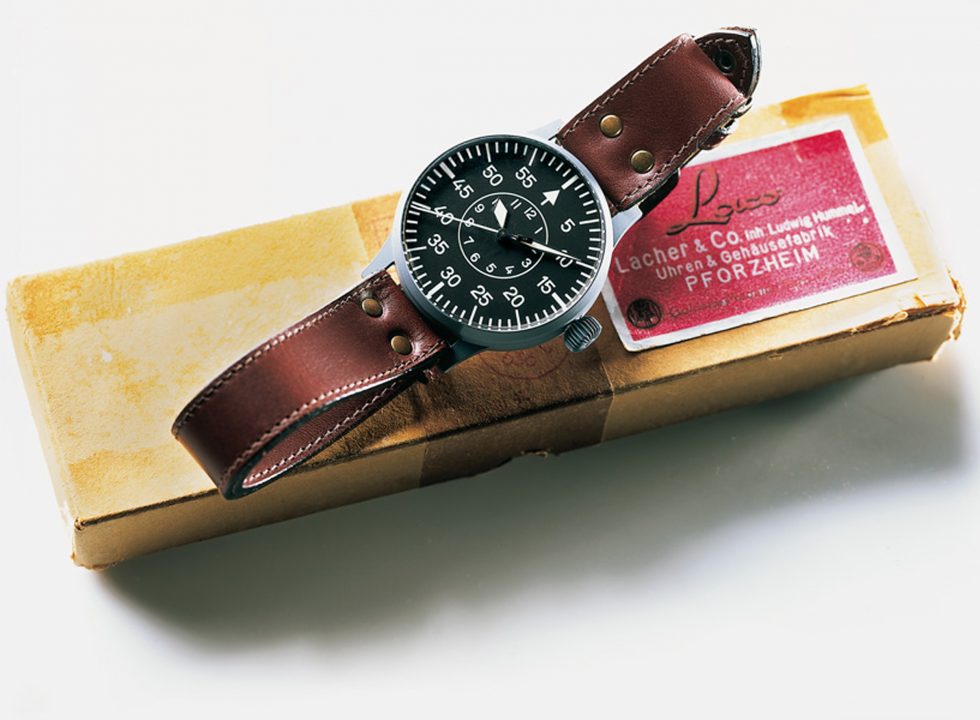
Laco (Lacher & Co) – Laco used the famous and large pocket watch movement Durowe D5. The movement has a very large (22 mm) balance and a simple regulator. The Durowe D5 was manufactured until 1945.
Stowa (Walter Storz) – Walter Storz purchased the Unitas 2812 movements for the B-Uhren watches from Switzerland. It is regulated by a large swan neck fine adjustment. On February 23, 1945, the STOWA factory was destroyed by the British bombardment on Pforzheim.

Wempe (Chronometerwerke Hamburg) – The Wempe was fitted with a Revue movement cal. 31 and is known by collectors as being the Wempe Carl Thommen, Revue K 31, B-Uhr. Master watchmaker Buse, Mainz/Germany, an expert on WW II B-Uhren once stated that only 60 watches have been made. That’s why they might fetch from €15.000 to €20.000 when in excellent condition.

IWC – A total of 1200 caliber 52 SC (officially “52T-19”’ H6 S.C.”) movements were made, and around 1000 went into the B-Uhren made by IWC. SC stands for central seconds or also known as sweep seconds hand, and had an additional anti -magnetic inner case.
Flieger Chronographs
The tradition of German watchmaking goes back several centuries, with a flourishing watch community in Glashutte. However, after World War I, Germany was prohibited from military aviation, so there were no official aviation watches being produced. Nevertheless, in the 1920’s and 1930’s there were pilot’s watches in circulation, produced by Swiss makers such as Omega, Longines, and a few manufactured by IWC. By World War II, many of the chronograph wristwatches for the German Airforce were produced in Germany by Ührenfabrik AG Tutima of Glashütte, Saxony, and by Hanhart of Schwenningen on the Neckar. Hanhart first began producing aviator chronographs in 1939, while Tutima started in 1941.
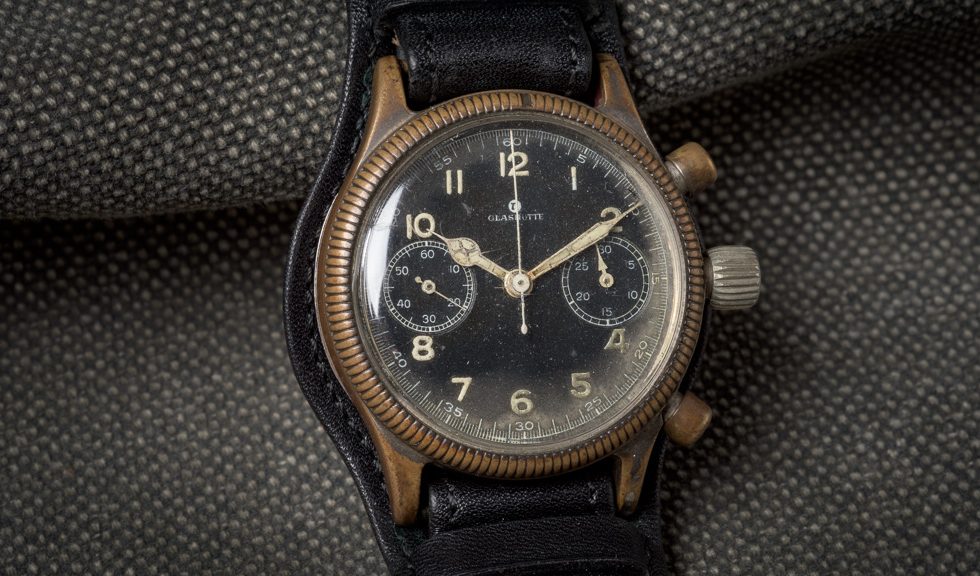
The watches by both brands were similar in appearance, having a rotating bezel with a marker for time, chronograph function for timing up to 30 minutes, and did not display any type of military marking. They also featured black dial faces with radium-coated luminous hands and Arabic numerals for easy reading in poor visibility. Early examples featured seamless cases, where the lugs were part of the case, while on later examples, the lugs were soldered to the case. On most examples, the pusher button for resetting the chronograph was coated in a red enamel to clearly indicate its purpose, so the wearer would not accidently push it. Hanhart also produced examples with a single chronograph button that controlled the start, stop, and reset functions. Aside from the manufacturer’s name on the dial, the watches were also distinguishable by the asymmetry of pusher – the top pusher on Hanhart watches touches the upper right lug, while the bottom pusher on Tutima watches touches the lower right lug.
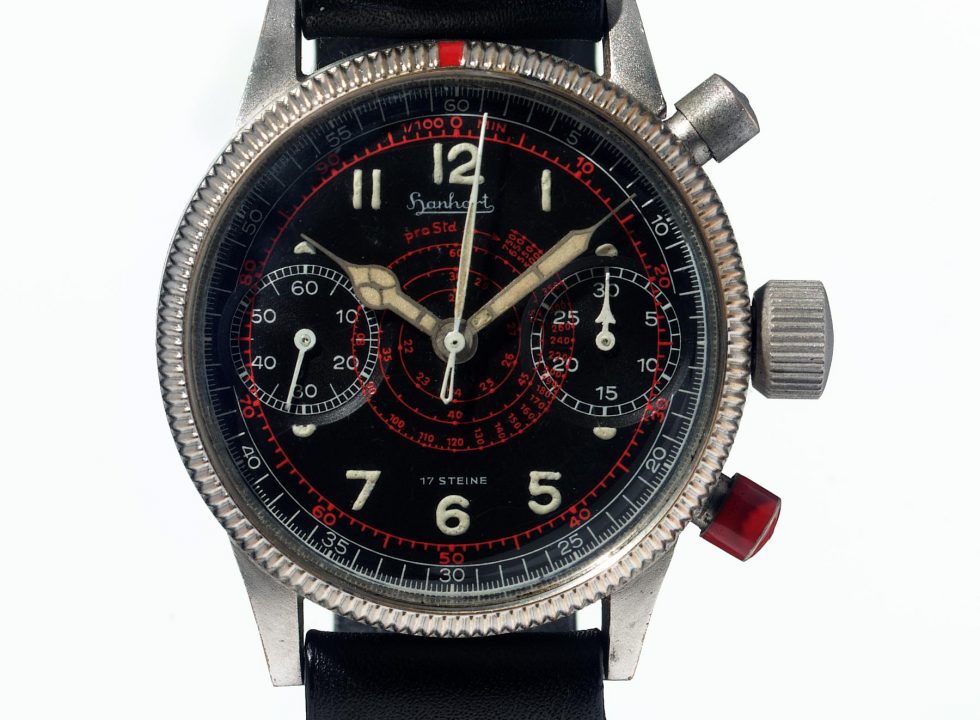
The Tutima company was founded in 1927 by Dr. Ernst Kurtz, the managing director of Ühren-Rohwerk-Fabrik Glashütte AG (UROFA). In the 1940’s, UROFA developed the flyback chronograph caliber 59, and used this movement in Tutima watches that were supplied to the German military. It is estimated that approximately 15,000 chronographs were produced for the German airforce, but following the war, most were returned upon completion of a pilot’s mission. Early examples are particularly sought-after by collectors, and are often not in very good condition or heavily restored. Being cased in nickel-plated brass, many examples have cases where the brass is showing through worn plating.
Hanhart, based in Schwenningen at that time (Black Forest region), manufactured two types of chronographs: two-pusher and a mono-pusher chronograph. Each of the chronograph had either turning bezel or a stationary bezel. The mono-pusher had the same movement as in the pocket chronograph of the Naval artillery. Prior to the 1950’s Hanhart chronograph cases were nickeled brass, and then switched to steel cases thereafter. After the war, the Black Forest was part of the French Occupation Zone, so Hanhart in Schwenningen continued to produce the chronographs under the brand Vixa for the French forces.
The post war watches for the German Air Force have some interesting and familiar watch brands, models, and movements:
1955: Hanhart 417
Hanhart 417 was the first watch issued to pilots of the reformed Bundesluftwaffe in 1955. Nearly identical to the wartime flieger chronographs, the 417 had bonus cachet thanks to its association with Steve McQueen, who wore one throughout the 1960s. But the Hanhart was a decidedly pre-war design for men flying Mach 2-capable F-104 Starfighters. Hence, Junghans was tapped as a second provider of pilot watches in 1957.
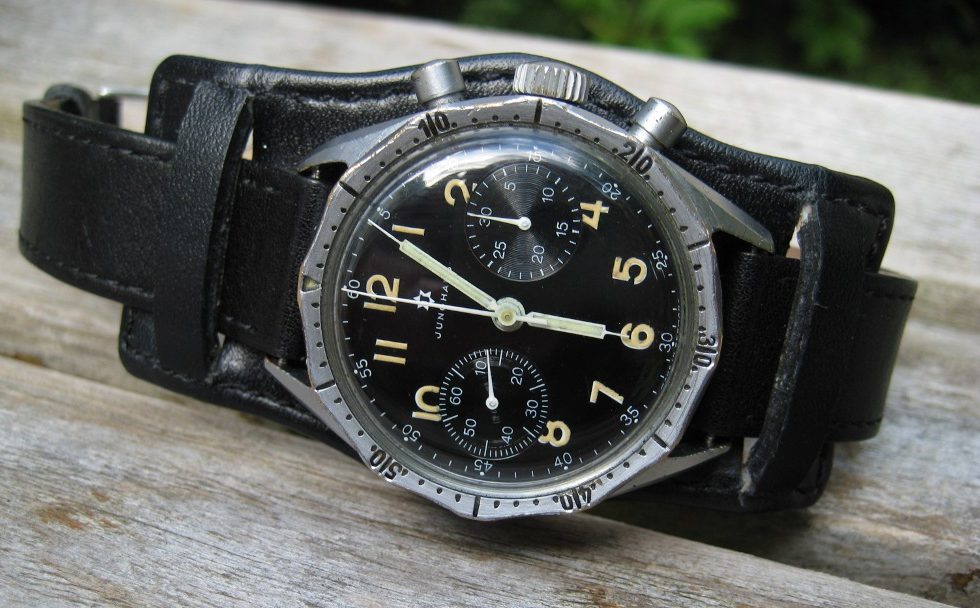
1957: Junghans J88
Junghans developed the famous column-wheel J88 chronograph movement in 1949. Their watches stand out to this day with the unusual twelve-sided bezel. Junghans were issued to pilots (F-104 Starfighters) from 1957 until it was replaced by the Heuer (Leonidas) Bundeswehr chronographs in 1967.
1967: Heuer-Leonidas Bundeswehr
In 1964 Heuer merged with Leonidas, a competitor who produced watches for the Italian military. The new company- known as Heuer-Leonidas S.A., supplied the Bundeswehr chronograph bearing Leonidas logo to the Bundesluftwaffe in 1967. It had a 43mm case and a hand-wound Valjoux 220 movement.
1969: Sinn 1550
Helmut Sinn gained a contract to service the watches for the German army, and took the opportunity to swap out the original Heuer dials with a Sinn logo replacement. This is essentially Heuer 1550SG with Valjoux 230 movement. Helmut Sinn purchased Heuer parts and sold several Sinn dialed 1550SG to military and later to civilians.
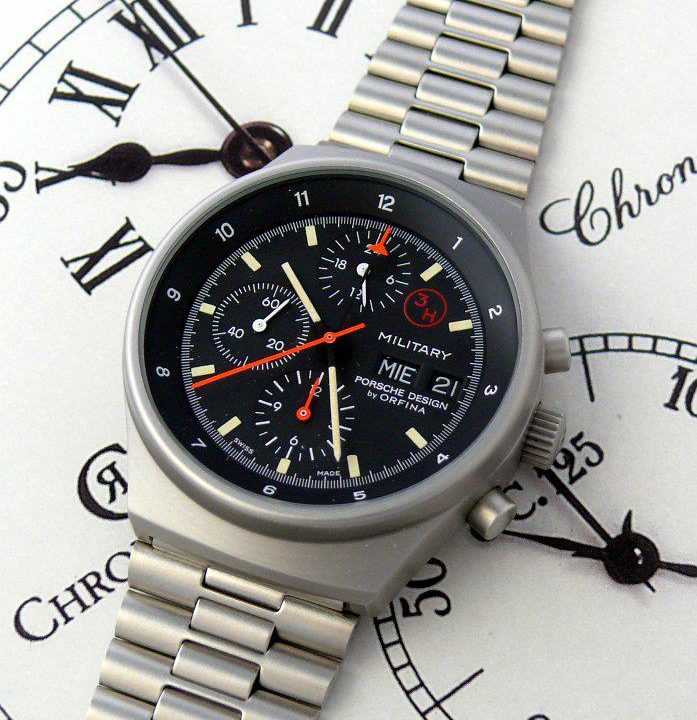
1979: Orfina/Porsche Design
The Orfina Porsche Design “3H military” model was issued to the German military beginning in 1979. This watch was manufactured by Orfina, to the design of the Porsche car company. Orfina used the Lemania 5100 automatic movement.
1982: Arctos
Arctos of Pforzheim manufactured a chronograph for the Army Air Corps of the Federal Forces of Germany. Arctos Bund watch looked just like the Orfina watch, powered by the Lemania 5100 movement.
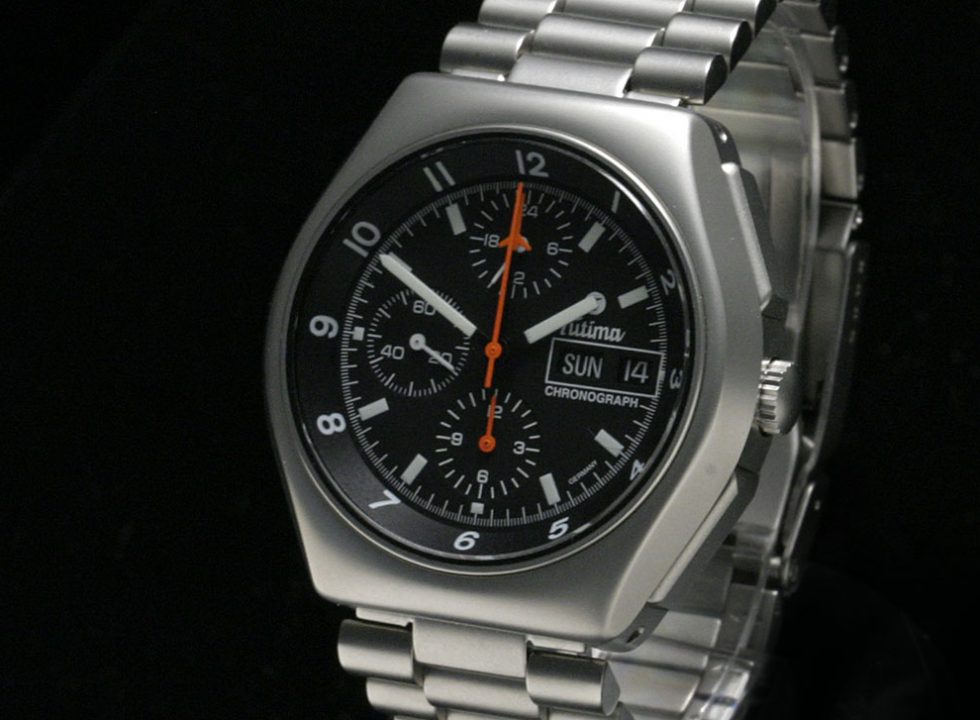
1983: Tutima
Tutima received the contract for supplying chronographs to the airmen of the TSK Army, Airforce and Navy, as well for the reconnaissance troops of the army and submarine. Tutima chronographs used the Lemania 5100 movement as well.
Modern Fliegers
According to Watchuseek’s resident flieger expert, Mike Stuffler, contemporary Flieger watches still breath the “kerosene tainted air of former times”. A flieger still has a special aura apart from its characteristics such as readability, robustness, tool-ish look. This aura makes flieger watches somehow immortal and desirable. Almost all brands have at least a flieger inspired watch in their portfolio.
The modern flieger have embraced practical design for the ease of daily wrist wear. They have a similarity to Type A and Type B dial layouts; some have the added date complication; and finally, they have shrunk and hence use smaller movements like ETA 282x, Valjoux 775x, and Sellita calibers.
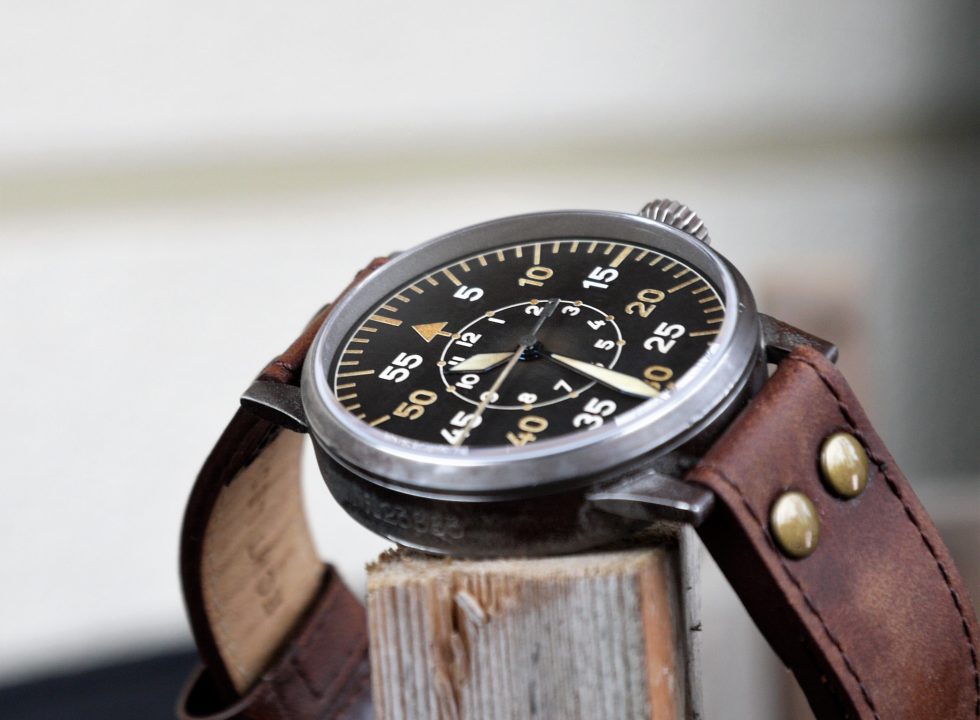
There are so many Swiss and German brands that make fliegers, it will be unrealistic to name them and provide an overview of all of them. Let’s start with original manufacturers of the WW II fliegers. Except for Lange, rest of the original manufacturers – IWC, Laco, Stowa, and Wempe still make homage flieger. Tutima and Hanhart also continue to make modern flieger chronographs. These brands have the credibility of the history and certain design elements despite the change in ownerships or production process.
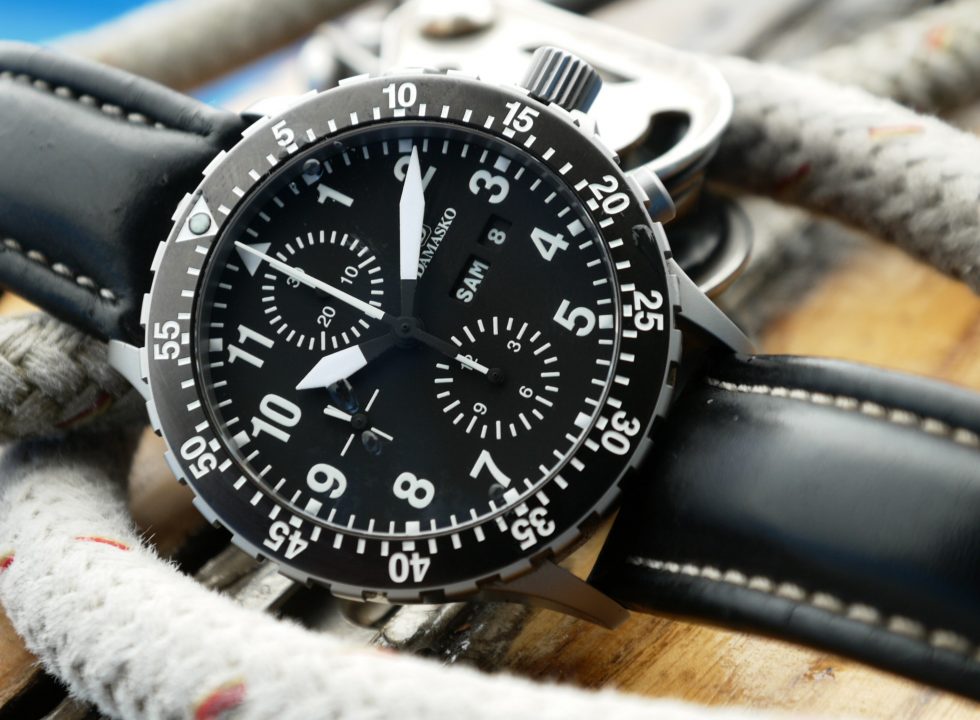
In addition to the original manufacturers, there are popular brands who do a justice to designing a good homage flieger. Archimede makes excellent Type A and flieger chronographs. Sinn and Damasko have enhanced the modern fliegers with use of technology and materials. Sinn, along with Stowa, have a new German watch standard, DIN 8330, for Pilots watches, which was published in March 2016.
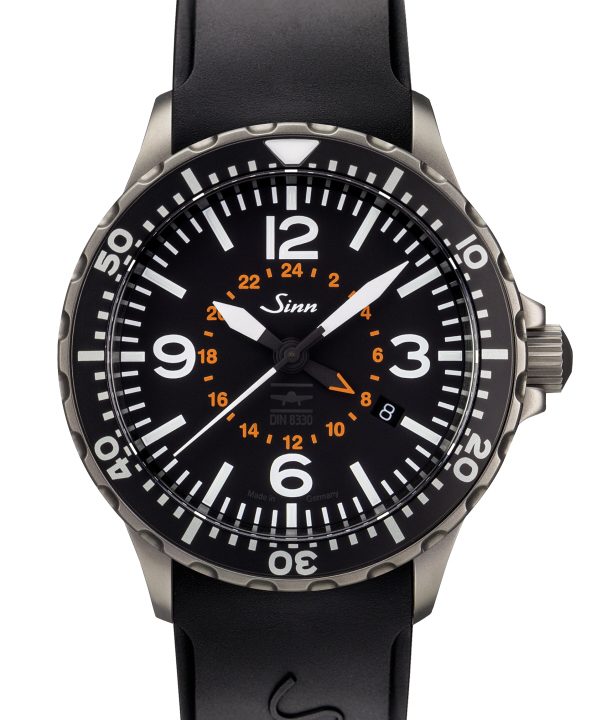
It is important to mention DIN 8330, as it is a well-intentioned standard for the certification of a modern flieger. At a high level, this standard certifies a watch for a fast, clear readability of the dial both during the day and at night, the ability to operate the watch even while wearing pilot gloves, temperature changes, impact load and centrifugal force, as well as accuracy not only at room temperature but also at ranges of between –15°C and +55°C.
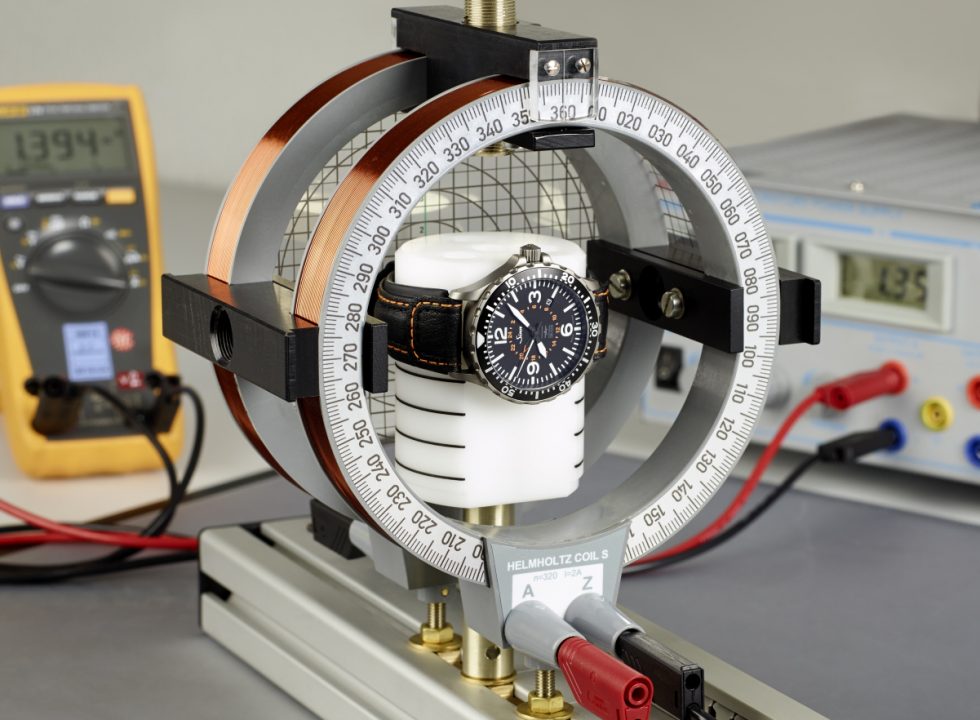
In addition, the DIN 8330 also defines more precise criteria, including for vibration resistance, magnetic field protection, resistance to liquids commonly encountered in the aviation industry (fuel, lubricants, cleaning fluids and de-icer) and compatibility with night-vision equipment.
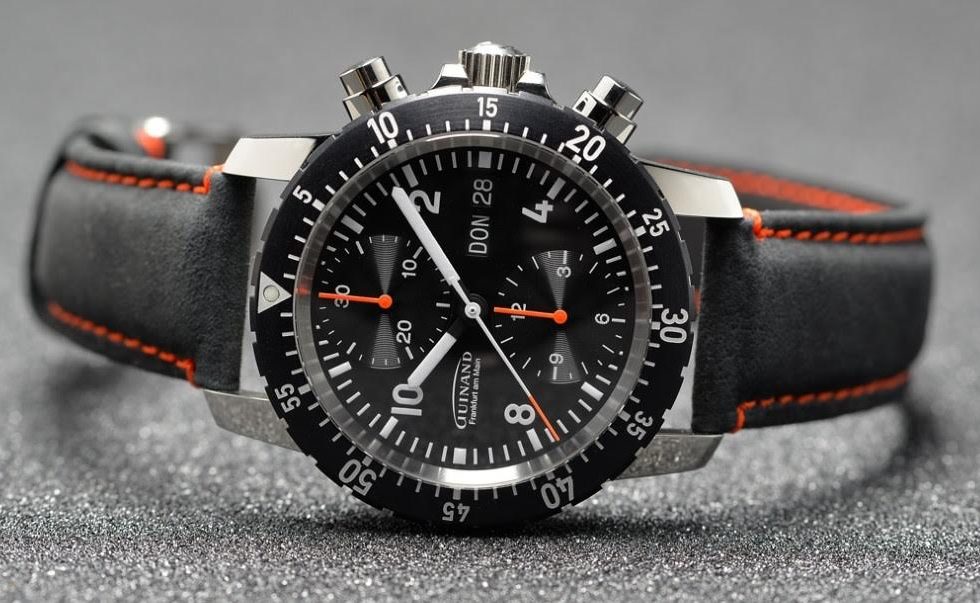
When Helmut Sinn left Sinn in 1994, he purchased an old Swiss brand, Guinand. He retired in 2006 at the age of 90, hence Guinand is under a new ownership and continues to make interesting fliegers. Bruno Belamich and Carlos Rosillo, who worked under the mentorship of Helmut Sinn, launched square instrument-based fliegers under the popular Bell & Ross brand. In the famous watchmaking town of Glashütte, Mühle Glashütte is making variations of flieger, and until recently, Glashütte Original made great homage fliegers with in-house movements.
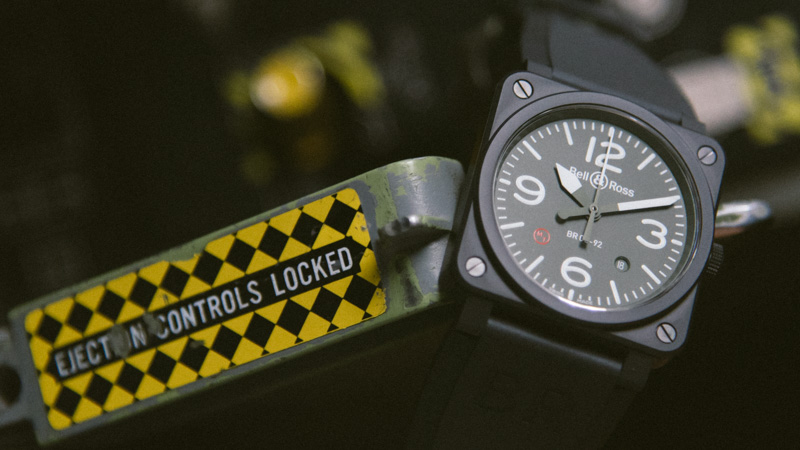
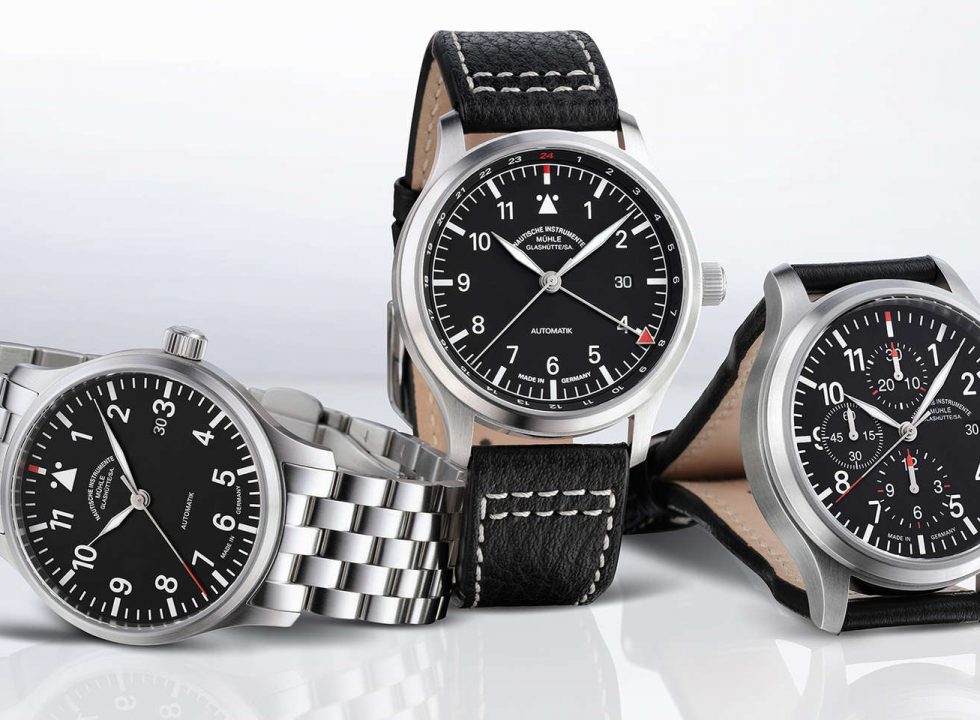
Zenith, Longines, Breitling, Breguet, Heuer, Dodane, Omega, Bremont, Fortis, and Alpina are noteworthy when discussing military and aviation watches. Some of them played an important role for the French, British, and American pilots.
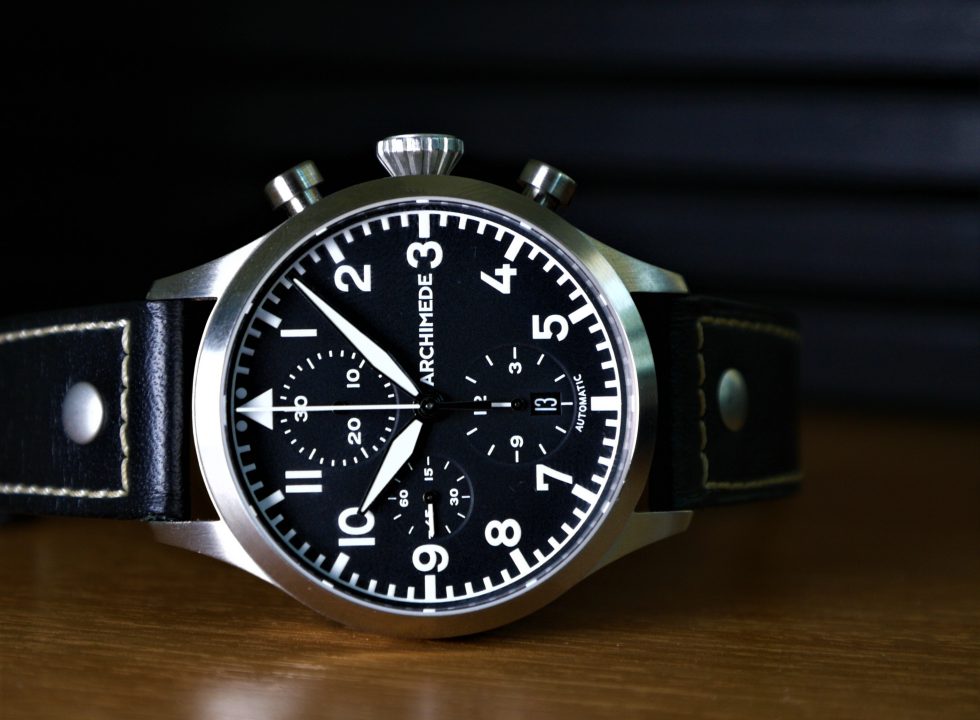
We will continue to provide individual focus on important modern fligers brands and watch models. We will interview subject matter experts like Konrad Knirim and various passionate flieger collectors. Join us on this continuing journey into the world of fliegers.
Sources:
Mike Stuffler, Watchuseek German watch expert
Militäruhren – Military Timepieces, by Konrad Knirim, Second Edition 2002
Photo credit: Respective watch brands and Watchuseek forum member contributions
This content is republished from Watchuseek.com

